#Fissure Gene
Text
Help me choose breed + outfit?
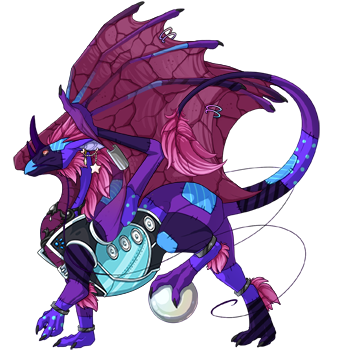
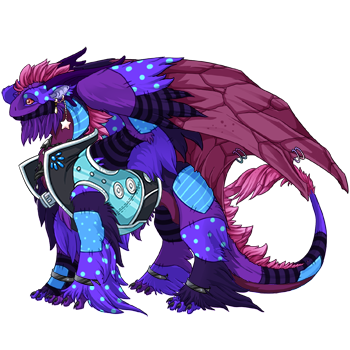


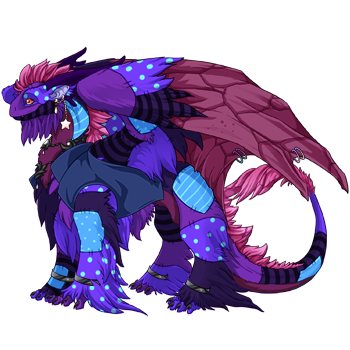
Picked up an awesome pony adopt from @flygefisk and found a gen 1 that's almost perfect!
12 notes
·
View notes
Text

Tarnish/Chartreuse/Copper
#flight rising#dragon share#scrying workshop#pearlcatcher#flight rising pearlcatcher#boulder gene#fissure gene#points gene#nature flight#nature primal
72 notes
·
View notes
Text

December 15, 2023:
Gloom Tertiary, Sandsurge, Fissure.
Unnamed of Katargo's clan!
2 notes
·
View notes
Text
across the spider-verse characters, but as flight rising dragons
𝟣. miles morales: obsidian/sanguine/ruby
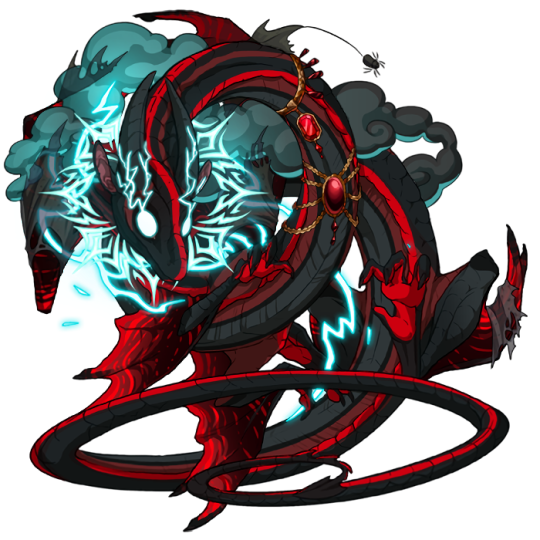

2. gwen stacy: orca/magenta/magenta

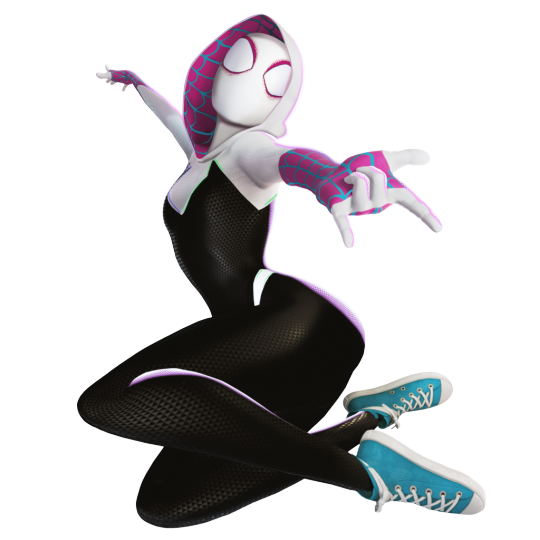
3. pavitr prabhakar: crimson/oilslick/vermilion


4. hobie brown [wildclaw] [ridgeback]: crimson/garnet/obsidian



edit: someone on discord made a good point that hobie shouldnt be the most expensive kind of dragon, so i added a ridgeback alt version! f pose ridgeback, since theres apparel layering issues on the m pose
5. miguel o'hara: sapphire/garnet/ruby

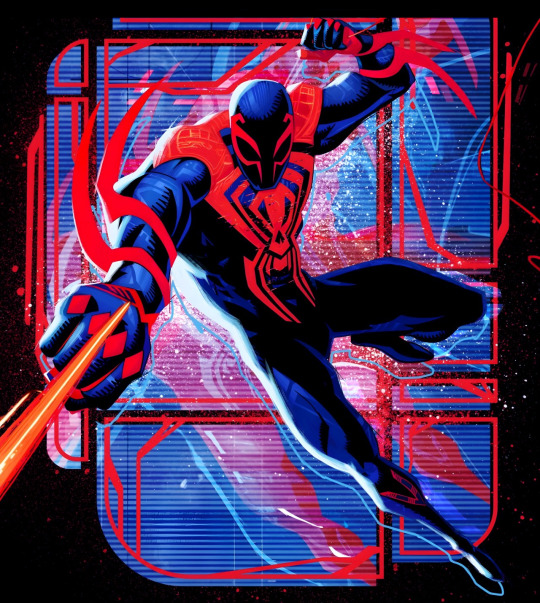
6. jessica drew: vermilion/obsidian/oilslick


7. peter b. parker: sapphire/vermilion/vermilion

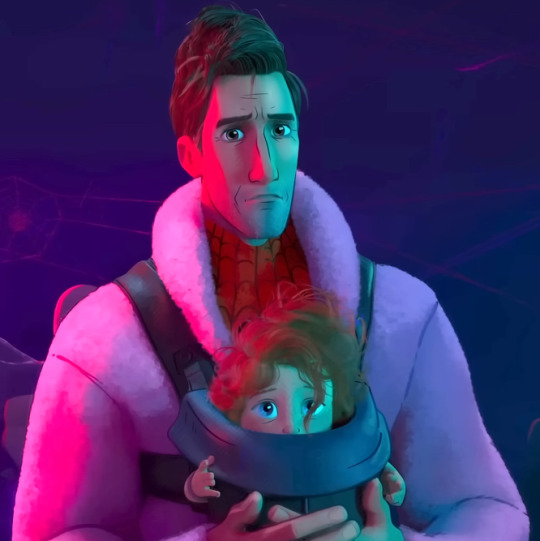
---------------------
design notes about the scries, below the cut:
𝟣. miles morales
the patterns from his genes already reflected miles' spider-suit patterns well, so his scry doesnt have a lot of apparel
the bewitching ruby pendants represents his spider logo
2. gwen stacy
gwen has runes tert, because there werent any suitable pink glove apparels (the peony ones dont match well)
i considered giving the scry banana noxtide as a secondary to mimic her hair's pink hairlights, but it didnt mesh well
3. pavitr prabhakar
i couldn't figure out how to represent pavitr's spider logo, so i just gave his scry a necklace in lieu of it
the "navy bandana" was way too big and the color didnt match, so i opted for the "sky blue fillet" to represent his headband
4. hobie brown
hobie's scry/outfit was surprisingly easy to come up with, and was the first one i did
he gets a lute because theres no guitar apparel
his patchwork secondary represents his collage art style
5. miguel o'hara
i chose banescale for miguel, as his spider-suit is so simple/streamlined that it wouldnt translate well to apparel + skeletal tert being spiky is reminiscent of his arm spikes
[insert steven universe joke here about his colors being sapphire/garnet/ruby]
6. jessica drew
i thought about representing jessica's motorcycle with the "flameforger crucible" or "igneous iguana" apparels, but they were too bulky unfortunately
vermilion skink doesnt have her exact shade of yellow, but is close enough that oilslick peacock's yellow accent color balances it out visually
7. peter b. parker
fissure secondary represents the spider web pattern on peter's spider-suit
i know his slippers are supposed to be blue, but the "mage's peony socks" looked better here
the bookworm plushie is a stand-in for mayday
if youve made it to here, feel free to comment which fandragon scry is your fav! :)
#flight rising#atsv#across the spider-verse#spiderverse#miles morales#gwen stacy#pavitr prabhakar#hobie brown#miguel o'hara#jessica drew#peter b parker#spider man: across the spider verse#fandom scries#dressing room#scrying workshop#really proud of how hobies scry came out#i spent way too long scrying these up i hope people like them
1K notes
·
View notes
Text

custom skincent i made for Kyurem #77918228, came in recently! (they as in plural if referring to both, Zekrom (curled horns) he/they and Reshiram (upright horns) she/they.)
[image: a female-pose Aberration with Shale Diamond and Orca FIssure genes. they are wearing Skin: Ideal Truth which gives them two pairs of feathered wings, off-black on Zekrom's side and icy blue on Reshiram's side of the body. it also affects their horns, darkening the tips of Zekrom's and adding a white-blue gradient to Reshiram's. /end id.]
#flight rising#fr dragon share#fr aberration#my dragons#group/fandragons#fr skins and accents#my art#(i suppose)
111 notes
·
View notes
Note
Okay the dusthides are very cute I like them but why's it the same issue as with auraboas where like, genes that would look totally awesome on them and fit the theme of the breed just aren't there...? Where's Shardflank! Koi? Flecks? Crystal/Facet? Veined??
Plating would have been so cool on them! Scorpion maybe! Skeletal! Glimmer!
These are rock dragons and my only options to make them look like shiny rocks is to use uhh... ground, fissure and opal...? Gembond is there at least? Sparkle I suppose? Petrified and lode are a cool pair, I appreciate them. But. That's it? I love these guys but is that really it for rocks?
Instead there's fishbone again. Not sure why mandibles is there. And batty. Like cmon let us make ROCK DRAGONS
🌱
35 notes
·
View notes
Text
Scry the best Ridgie: a contest to convert me into a Ridgie lover
I’ve always wanted to like Ridgies but have never been able to fall in love with one.
If anyone can scry a dragon currently available on the AH or otherwise for sale into a ridgie and show me that ridgeback is the best breed for it, I’ll give them 5kg.
Include a link to the dragon. I don’t recommend using fodder dragons, as they tend to sell pretty quickly.
I’m most fond of the female pose and have a dislike of the following genes:
Crystal
Ground/Fissure
Mosaic/Breakup
Stitched/Patchwork
Slime/Sludge
Vipera/Hypnotic
Wasp
Clouded
Edged
Saturn
Stripes
Circuit
Crackle
Gembond
Glowtail
Points
Scales
Smirch
Smoke
Spines
I tend not to like anything but XYZ dragons, and dislike gene pairs.
Here is a link to my LAIR to help give examples of what I tend to like (though it’s kinda random, as far as I can tell).
Bonus 2kg if you also include an outfit that I like for the dragon.
There can be multiple winners.
69 notes
·
View notes
Text
All Polls | Results
If you are looking for a specific gene I would recommend ctrl+f to find this list is Long :)
Gene Polls will be linked as/when they are posted and updated with Overall winning opinion once they close
Modern/Parallel Primaries
Bar - Positive Leaning Neutral (36.6%)
Basic - Neutral (44.5%)
Boa - Love! (45.4%)
Boulder - Love! (39.5%)
Cherub - Like (35.8%)
Chrysocolla - Love! (49.1%)
Cinder - Love! (60%)
Clown - Like (37.2%)
Crystal - Like ( 30.6%)
Fade - Love! (51.4%)
Falcon - Like ( 38.6%)
Fern - Like (43.3%)
Flaunt - Love! (59.3%)
Giraffe - Like (43%)
Ground - Neutral (43.4%)
Harlequin - Love! (62.3%)
Iridescent - Like (32.8%)
Jaguar - Love! (45.6%)
Jupiter - Neutral (42.9%)
Laced - Neutral (40.7%)
Leopard - Like (38.2%)
Lionfish - Like (32.3%)
Metallic - Like (36.6%)
Mosaic - Dislike (32.3%)
Petals - Like (37.1%)
Pharaoh - Love! (42.8%)
Piebald - Like (31.4%)
Pinstripe - Like (37.6%)
Poison - Love! (40%)
Python - Love! (49.2%)
Ribbon - Like (41.3%)
Ripple - Positive-leaning Neutral (35.6%)
Savannah - Like (41%)
Skink - Love! (45.6%)
Slime - Like (30%)
Speckle - Neutral (36.1%)
Starmap - Love! (42%)
Stitched - Neutral (28.3%)
Swirl - Like (44.7%)
Tapir - Like (41.3%)
Tide - Love! (40%)
Tiger - Like (43%)
Vipera - Neutral (41.7%)
Wasp - Love! (42.3%)
Modern/Parallel Secondaries
Alloy - Like (40.5%)
Basic - Neutral (48.9%)
Bee - Love! (69.2%)
Blaze - Love! (57%)
Blend - Love! (44.7%)
Breakup - Neutral (31.3%)
Butterfly - Love! (44%)
Clouded - Neutral (48.6%)
Constellation - Love! (58.5%)
Current - Positive-leaning Neutral (36.3%)
Daub - Neutral (45.3%)
Edged - Neutral (40.6%)
Eel - Like (41.2%)
Eye Spots - Neutral (44.6%)
Facet - Like (33.8%)
Fissure - Neutral (45.2%)
Flair - Love! (73.7%)
Foam - Love! (51%)
Freckle - Neutral (39.7%)
Hex - Neutral (43.1%)
Hypnotic - Negative-leaning Neutral (3.7%)
Jester - Love! (54.8%)
Malachite - Love! (48.6%)
Marbled - Like (45.4%)
Morph - Like (42.4%)
Myrid - Love (46.6%)
Noxtide - Love! (44.8%)
Paint - Neutral (33.5%)
Paisley - Like (41.5%)
Patchwork - Like (26.7%)
Peregrine - Like (40.5%)
Rosette - Like (34%)
Saddle - Like (48.9%)
Safari - Neutral (41.7%)
Sarcophagus - Love! (38.1%)
Saturn - Neutral ( 35.4%)
Seraph - Like (35.3%)
Shimmer - Like (36.2%)
Sludge - Like (31.6%)
Spinner - Like (44.9%)
Striation - Like (41.5%)
Stripes - Neutral (44.1%)
Toxin - Like (41.6%)
Trail - Like (40.5%)
Modern/Parallel Tertiaries
Basic - Neutral (41.6)
Capsule - Love! (49.8%)
Circuit - Neutral (31.6%)
Contour - Positive-leaning Neutral ( 37%)
Crackle - Neutral (34.8%)
Filigree - Positive-Leaning Neutral (29.7%)
Firebreather - Like (34.1%)
Firefly - Like (31.7%)
Flecks - Like (37.5%)
Gembond - Neutral (34.7%)
Ghost - Like (38.3%)
Glimmer - Love! (60.2%)
Glowtail - Like (34.5%)
Keel - Dislike (36.7%)
Koi - Love! (45.1%)
Lace - Neutral ( 35%)
Okapi - Like (37.9%)
Opal - Love! (40.5%)
Peacock - Like (34.2%)
Points - Neutral (38.1%)
Polkadot - Neutral (32.9%)
Ringlets - Neutral (37.7%)
Runes - Love! (44.2%)
Scales - Balanced Neutral (29.4%)
Smirch Dislike (36.8%)
Smoke - Neutral (37.2%)
Soap - Like (31%)
Sparkle - Like (35.9%)
Spines - Neutral (41.7%)
Stained - Love! (47.4%)
Thylacine - Like (36.1%)
Underbelly - Love! (36%)
Veined - Like (44%)
Wish - Like (32.2%)
Ancient Primaries
Arapaima (Sandsurge) - Like (36.8%)
Arc (Veilspun) - Like (36.3%)
Bright (Veilspun) - Leaning Negative Neutral (36.8%)
Candy (Aether) - Neutral (35.8%)
Candycane (Banescale) - Neutral (46.6%)
Caterpillar (Auraboa) - Like (40.8%)
Checkers (Undertide) - Negative-leaning Neutral ( 30.6%)
Chevron (Banescale) - Like (42.7%)
Diamond (Aberration) - Like (38%)
Love (Auraboa) - Like (37.9%)
Marble (Banescale) - Like ( 34.8%)
Mochlus (Auraboa) - Love!! (60.2%)
Octopus (Undertide) - Like (39.3%)
Orb (Aberration) (Auraboa) - Like (31.9%)
Phantom (Gaoler) - Like (45.8%)
Ragged (Banescale) - Love! (45.4%)
Rattlesnake (Sandsurge) (Auraboa) - Like (35.2%)
Sailfish (Sandsurge) - Love! (43.8%)
Shaggy (Gaoler) - Positive-leaning Neutral (45.7%)
Shell (Veilspun) - Like (37.3%)
Sphinxmoth (Veilspun) - Like (38.8%)
Spool (Aether) - Like (41.3%)
Twinkle (Aether) - Like (34.5%)
Varnish (Auraboa) - Love! (37.2%)
Wicker (Auraboa) - Neutral (44.3%)
Wolf (Undertide) - Positive-leaning Neutral (40.1%)
Wrought (Sandsurge) - Positive-leaning Neutral (37.7%)
Ancient Secondaries
Affection (Auraboa) - Like (38.3%)
Arowana (Sandsurge) - Like (45.9%)
Arrow (Banescale) - Like (43.8%)
Chess (Undertide) - Postive-leaning Neutral (33.1%)
Diamondback (Sandsurge) (Auraboa) - Like (50.3%)
Flicker (Aether) - Like (34.1%)
Hawkmoth (Veilspun) - Like (44.7%)
Icing (Aether) - Neutral (37.2%)
Lacquer (Auraboa) - Like (39.1%)
Larvae (Auraboa) - Like (40.2%)
Loop (Veilspun) - Like (49.3%)
Marlin (Sandsurge) - Love! (47.4%)
Mottle (Banescale) - Neutral (45.9%)
Pack (Undertide) - Neutral (49. 3%)
Rings (Undertide) - Like (43.2%)
Riopa (Auraboa) - Love! (62.3%)
Spade (Aberration) - Like (42%)
Spire (Sandsurge) - Neutral (45.5%)
Spirit (Gaoler) - Neutral (51.9%)
Streak (Gaoler) - Neutral (51.7%)
Sugarplum (Banescale) - Negative-leaning Neutral (40.6%)
Tear (Banescale) - Love! (44.4%)
Thread (Aether) - Like (45.6%)
Vivid (Veilspun) - Like (41.3%)
Weaver (Aberration) (Auraboa) - Like (41%)
Web (Veilspun) - Like (48.9%)
Woven (Auraboa) - Neutral (38.1%)
Ancient Tertiaries
Angler (Gaoler) (Veilspun) (Undertide) - Like (34.1%)
Augment (Aberration) (Sandsurge) - Love! (57.8%)
Batty (Auraboa) - Neutral (41.4%)
Beard (Sandsurge) - Love! (28.7%)
Beetle (Veilspun) - Neutral (32.7%)
Blossom (Gaoler) (Undertide) - Love! (41.6%)
Braids (Aberration) (Gaoler) - Neutral (41.2%)
Branches (Veilspun) (Sandsurge) (Auraboa) (Undertide) - Love! (46.4%)
Brightshine (Undertide) (Veilspun)
Carnivore (All, except Auraboa) - Love! (34.7%)
Chitin (Sandsurge) - Like (33.9%)
Crest (Auraboa) (Sandsurge) - Neutral (5.5%)
Crystalline (Aether) (Gaoler) - Neutral (35.5%)
Darts (Sandsurge) - Like (49.1%)
Diaphanous (Veilspun) - Love! (44.1 %)
Fangs (Aberration) - Neutral (41.6%)
Fans (Aberration) (Banescale) (Gaoler) - Positive-leaning Neutral (38%)
Featherbeard (Undertide) - Neutral (41.9%)
Fishbone (Auraboa) (Sandsurge) - Like (39.8%)
Flameforger (Aberration) (Banescale) - Love! (42.1%)
Flutter (Aether) - Like (36.3%)
Frills (Aberration) - Like (31.4%)
Gliders (Banescale) - Neutral (37.9%)
Gnarlhorns (Gaoler) - Love! (38.9%)
Jellyfish (Undertide) - Love! (42,2%)
Jewels (Aberration) - Neutral (40.3%)
Kumo (Aberration) (Sandsurge) - Like ( 34%)
Medusa (Auraboa) - Love! (34.4%)
Monarch (Aether) (Banescale) - Like (39%)
Mop (Veilspun) - Neutral (35.5%)
Mucus (Aberration) - Neutral (35.4%)
Nudibranch (Undertide) - Like (41%)
Paradise (Auraboa) - Like (39.1%)
Pinions (Gaoler) - Like (25.1%)
Plating (Undertide) - Neutral (38.9%)
Polypore (Aberration) - Love! (29.8%)
Porcupine (Auraboa) (Banescale) (Undertide) - Neutral (40.4%)
Pufferfish (Undertide) - Neutral (36.8%)
Remora (Undertide) - Like (39.6%)
Riot (Aberration) (Gaoler) - Neutral (33.1%)
Rockbreaker (Auraboa) (Sandsurge) - Neutral (33.3%)
Sailfin (Undertide) (Auraboa) - Like (40.6%)
Scorpion (Gaoler) - Positive-leaning Neutral (38.3%)
Scuttle (Auraboa) - Love! (39.6%)
Shardflank (Gaoler) - Like (40.1%)
Shark (Sandsurge) - Like (32.6%)
Skeletal (Aberration) (Banescale) - Like (35.5%)
Space (Aether) - Love! (24.8%)
Spectre (Sandsurge) - Like (40.6%)
Squiggle (Banescale) - Neutral (35%)
Starfall (Aether) (Sandsurge) - Like (38.1%)
Stinger (Aeth) (Aura) - Like (39.3%)
Tentacles (Undertide) - Positive-leaning Neutral (31.2%)
Terracotta (Auraboa) - Neutral (40.6%)
Thorns (Veilspun) (Auraboa) (Aberration) - Neutral (36.5%)
Thundercrack (Sandsurge) (Gaoler) - Like (41.7%)
Topcoat (Auraboa) - Like (36%)
Trickmurk (Aether) (Veilspun) - Love! (42.7%)
Trimmings (Banescale) - Neutral (44.1%)
Weathered (Gaoler) - Like (50.8%)
Whiskers (Aether) - Positive-leaning Neutral (33.3%)
Willow (Auraboa) - Like (31.1%)
Wintercoat (Gaoler) - Neutral (43%)
Wraith (Banescale) - Love! (53.8%)
21 notes
·
View notes
Note
Ok heres a few scrys for Headbanger, I'll do Mara right after

ground/fissure/veined

crystal/jester/firebreather

flair/noxtide/firefly

poison/saddle/opal

orb/sarcophagus/glowtail
I didn't change any of his eye genes tho so if you want a different shade of cyan I'd still give the scrying workshop a spin for him
Oh man, I actually adore the first one? Like holy shit?
5 notes
·
View notes
Text
SECONDARY GENE POLLS ROUND 1 SIDE 2 POLL 4
Genes shown under the cut!
FACET

FISSURE

#flight rising#flight rising genes#fr dragon genes#fr scrying workshop#scrying workshop#flight rising scry#flight rising polls#tumblr polls#polls
4 notes
·
View notes
Text
What do Sonic the Hedgehog and cyclopia have to do with each other? A lot, actually.
Alobar holoprosencephaly (aka cyclopia) is a condition in which the prosencephalon does not properly split during development. Let me explain what that means. So, one of the most important structures in the early embryo is the neural tube. This tube comes from the ectoderm and eventually becomes the central nervous system. The top of it has three little bulbs and the bottom is the spinal cord.
The top bulb is the prosencephalon, which will later differentiate into the telencephalon and diencephalon. These will become the cerebral hemispheres, basal ganglia, thalamus, hypothalamus, and amygdala. The middle bulb is the mesencephalon, which will become the midbrain. The bottom bulb is the rhombencephalon, which will differentiate into the metencephalon and myelencephalon. These will become the pons, cerebellum, and medulla.
So, this entire thing has to split in half anteriorly. The anterior portion of this structure deals with motor function, and the posterior half deals with sensory function. This holds true as an adult. The front half of your spinal cord carries motor nerves, and the back half carries sensory info. If you want to move your eyes, you use the front part of your brain. If you want to know what you are seeing, you use the back half.
If you look at your spinal cord, the front half has this fissure down the middle (anterior median fissure is such a fitting name, then right??). Your brain is also split down the middle. Since the eyes are part of your brain, you get one for each half of the brain (two). Now, let's say you never have this anterior fissure form... you won't get two eyes, either. The condition where the fissure doesn't form is called holoprosencephaly (holo means whole).
There are five types of this (in order of decreasing severity): alobar, semilobar, lobar, syntelencephaly, and microform.
*note that the more severe the condition is, the more likely the fetus will die and not form all structures mentioned*
Alobar: there will be one eye, a proboscis (fleshy tube on the face), and severe mental impairment.
Semilobar: eyes will be close together, the nasal bridge will be flat, the palate and lip will be cleft, and there will be mental and ocular impairment.
Lobar: the eyes will be close together, the nasal bridge will be flat, the nostrils will be close together, and there will be some mental impairments.
Syntelencephaly: flat nasal bridge, shallow philtrum, and possible mental delays.
Microform: eyes may be close, nasal bridge will be sharp, and there will be one central upper incisor.
Okay, so what does this have to do with Sonic the Hedgehog? Sonic hedgehog (SHH) genes, of course! This gene codes for the sonic hedgehog protein, which controls what happens during organogenesis (how everything differentiates and forms). A mutation in this gene can cause issues with how embryos form, and is indicated specifically in holoprosencephaly. SHH genes are still important in adults, and mutations can be linked to certain cancers.
Fun fact: an inhibitor of SHH genes is called Robotnikinin. I personally love this. And, here's a citation in case you don't believe me: https://www.ncbi.nlm.nih.gov/pmc/articles/PMC2770933/
#med student#medical school#medicine#biology#med school#med studyblr#anatomy#mcat#usmle#embryology#holoprosencephaly#cyclopia#cyclops#sonic hedgehog#sonic hedgehog genes#robotnikinin#brain stuff#neurology
3 notes
·
View notes
Text

September 7, 2023:
Maize Secondary, Snapper, Fissure.
Pigsy of SoulLugia11's clan!
3 notes
·
View notes
Text
11 Skin Conditions You’ve Almost Certainly Never Heard Of
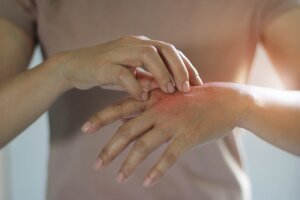
Millions of people in India suffer from at least one skin condition. You’ve probably heard of the more common ones, such as acne, eczema, and rosacea. In fact, there’s a strong possibility you have one yourself.
There are also a number of uncommon skin problems that you may be unaware of. They can range in severity from minor to fatal. They can have an impact on the quality of life of persons who develop them in some situations.
Continue reading for an overview of some of these lesser-known conditions.
Hidradenitis suppurativa
Hidradenitis suppurativa (HS) is a chronic inflammatory disorder that causes lesions to grow on skin-to-skin contact points on the body. The following are the most prevalent locations for breakouts:
underarms, groin, buttocks, upper thighs, and breasts
Although the etiology of HS is uncertain, hormones are likely to play a role in its development because it often begins around puberty.
The illness affects up to 2% of the population. It is especially common in those who are obese or who smoke. Women are more than three times as likely than men to have HS.
Genetics and the immune system are thought to play a role in who gets the condition.
DID YOU KNOW?
People who have hidradenitis suppurativa are more likely to have specific conditions (or comorbidities), such as:
inflammatory bowel disease (IBD) acne
Acne conglobata, dissecting cellulitis of the scalp, and pilonidal sinus disease are all part of the follicular occlusion tetrad (a collection of inflammatory skin disorders).
metabolic disorder
PCOS (polycystic ovarian syndrome)
Type 2 diabetes with squamous cell carcinoma of the afflicted skin
The first signs of HS are outbreaks that resemble pimples or boils. These outbreaks could remain on the skin or fade and recur.
If neglected, more severe symptoms like scarring, infection, and breakouts that rupture and produce a foul-smelling fluid might develop.
There is presently no cure for HS, however there are several therapy options to assist control symptoms. These are some examples:
topical ointments, anti-inflammatory medications, injectable biologics, and hormone therapy
In more severe situations, surgery may be recommended.
Psoriasis inversa
Intertriginous psoriasis is another name for inverse psoriasis. This illness, like HS, causes red sores on regions of the body where skin touches skin. These lesions do not resemble boils. They appear smooth and gleaming.
Many persons who have inverse psoriasis have at least one other type of psoriasis on their body. Experts aren’t clear what causes psoriasis, but genetics and the immune system both play a role.
Psoriasis affects roughly 3% of the world’s population, and 3–7% of those with psoriasis have inverse psoriasis.
Because the skin in high-friction parts of the body is sensitive, treating the condition can be challenging. Steroid creams and topical ointments can be beneficial, but they can also cause unpleasant irritation if used excessively.
People with more severe inverse psoriasis may also require UVB light therapy or injectable biologics to manage their illness.
Harlequin ichthyosis
Harlequin ichthyosis is an uncommon genetic condition that causes children to be born with rough, thick skin covered in diamond-shaped scales.
These plates, which are separated by deep fissures, can shape their eyelids, mouth, nose, and ears. They can also impede limb and chest movement.
Around 200 instances have been recorded around the world. The disorder is caused by a mutation in the ABCA12 gene, which permits the body to produce a protein required for normal skin cell formation.
The mutation hinders lipid transfer to the skin’s top layer, resulting in the scale-like plates. Because of the plates, it is more difficult to:
control water loss
combat illness by regulating body temperature
Harlequin ichthyosis is an autosomal recessive condition caused by faulty genes inherited from both parents.
Because biological carriers rarely show symptoms, genetic testing can detect changes in genes and calculate your risk of developing or passing on genetic illnesses.
A stringent regimen of skin-softening emollients and skin-repairing moisturizers is the most popular treatment for harlequin ichthyosis. Oral retinoids may also be utilized in extreme situations.
Morgellons syndrome
Morgellons disease is an uncommon ailment that causes microscopic fibers and particles to emerge from skin wounds, giving the impression that something is crawling on the skin.
The Morgellons Disease is poorly understood, although it affects nearly 14,000 families, according to the Morgellons Research Foundation.
Morgellons disease is most common in middle-aged Caucasian women. It’s also closely linked to Lyme disease.
Because the symptoms are similar to those of a mental health illness known as delusional infestation, some experts assume it is a psychological issue.
The symptoms are unpleasant but not life-threatening. Typical symptoms include:
weariness anxiety sadness itchy skin rashes or sores black fibrous substance in and on the skin
Lesions only affect one part of the body: the head, trunk, or extremities.
There is no standard treatment option for Morgellons disease because it is still poorly understood.
People suffering with the disease are usually encouraged to maintain close contact with their healthcare team and seek therapy for symptoms such as anxiety and depression.
Elastoderma
Elastoderma is an uncommon disorder characterized by increased skin looseness in particular parts of the body. As a result, the skin sags or hangs down in loose folds.
It can affect any region of the body, but the neck and extremities, particularly the elbows and knees, are the most usually afflicted.
The illness affects less than one in one million persons worldwide. Elastoderma’s actual cause is unknown. It is assumed to be caused by an excess of elastin, a protein that provides structural support to organs and tissues.
Elastoderma has no cure or recommended treatment. Some people will have surgery to remove the problematic area, although the loose skin often returns after the procedure.
Pilonidal sinusitis
Pilonidal sinus illness causes small holes or tunnels at the buttocks’ base or crease. Because symptoms aren’t always clear, most people don’t seek therapy or even recognize the issue until it causes problems.
It is caused when the hair between the buttocks rubs together. The friction and pressure that results pushes the hair inside, causing it to become ingrown.
This minor illness affects 10 to 26 people in every 100,000. The majority of people with this illness are between the ages of 15 and 30, and men are twice as likely as women to have it.
It frequently affects persons who work occupations that demand long periods of sitting. It is often associated with hidradenitis suppurativa (HS).
A few things influence treatment for an infected pilonidal sinus:
signs and symptoms
the size of the abscess, if it is a new or recurring infection
In most cases, treatment entails removing any visible pus from the affected pilonidal sinus. Antibiotics, hot compresses, and topical ointments are also frequently utilized.
If you’re one of the 40% of people with the illness who has reoccurring abscesses, talk to your doctor about other surgical alternatives.
Pemphigus vegetans
Pemphigus is classified as an autoimmune illness by the National Institutes of Health (NIH)Trusted Source. It causes your immune system to target healthy epidermal cells. The epidermis is the top layer of the skin.
Lesions or blisters form where skin naturally meets or rubs together, as in HS. They can also be found in or on the:
mouth, throat, eyes, nose, and genital areas
Pemphigus vulgaris is the most common kind of pemphigus. It affects 0.1 to 2.7 persons in every 100,000.
Pemphigus vegetans, a pemphigus vulgaris variation, accounts for 1 to 2% of pemphigus cases globally.
If untreated, Pemphigus vegetans can be lethal. The treatment focuses on removing the lesions or blisters and preventing them from recurring.
Corticosteroids and other anti-inflammatory steroids are frequently used as the first line of defense. In addition, you can have surgery to remove the lesions or blisters, while also cleaning and dressing the affected area on a daily basis.
Medicated mouthwash or clobetasol, a corticosteroid and ointment used to treat oral problems, are examples of mouth and throat remedies.
Crohn’s disease
Crohn’s disease is an inflammatory bowel disease (IBD) of the digestive tract.
It affects around 780,000 Indians. Every year, approximately 38,000 new cases are reported. Researchers believe that genetics, the immune system, and the environment all have a role in Crohn’s disease development.
Between 20 and 33 percent of persons with Crohn’s disease have skin lesions as a result of the condition. This is referred to as a cutaneous epidemic.
Cutaneous lesions, which resemble genital warts, appear after bowel disease has shown on the skin or another organ outside of the intestinal tract. The eyes, liver, and gallbladder are all included. It might also have an impact on the joints.
If your Crohn’s disease and lesions have metastasized, or spread, they can become painful and potentially lethal. There are currently few therapy options for this stage.
Sneddon-Wilkinson syndrome
Sneddon-Wilkinson illness is characterized by clusters of pus sores on the skin. Subcorneal pustular dermatosis (SPD) is another name for it.
Experts are unsure what is causing it. The disease, which is uncommon and sometimes misunderstood, primarily affects persons over the age of 40, particularly women. As a result, its precise prevalence is uncertain.
Soft, pus-filled pimples occur between skin that rubs together a lot, just like in HS. Skin lesions appear on the body, between skin folds, and in the vaginal area. They “explode” as a result of friction.
This popping of the lesions may be accompanied by an itchy or burning feeling. These feelings are followed by scaling and discolouration of the skin. Despite being chronic and painful, this skin ailment is not lethal.
The antibiotic dapsone is the preferred treatment for this condition, with a daily dose of 50 to 200 milligrams (mg) taken orally.
Lichen planus
Inverse lichen planus pigmentosus is an inflammatory disorder that causes skin fold discolouration and uncomfortable pimples.
Only about 20 cases have been documented worldwide, mostly affecting Asians. Nobody knows what is causing it.
Small clusters of flat lesions, or macules, of discolored skin appear. They don’t normally contain pus, but they do occasionally. Some people’s skin spontaneously clears up with time, whilst others may experience symptoms for years.
This is a mild condition that can be addressed with a topical treatment. Corticosteroids are the most often used treatments for wound healing and can even aid with pigmentation in some situations.
Dowling-Degos syndrome
Dowling-Degos disease is a hereditary illness that causes darker skin, especially in folds such as the armpit, groin, and joint areas.
Pigment changes can also affect the neck, hands, cheeks, and scalp, albeit they are less prevalent.
The majority of the lesions are minor and resemble blackheads, however red areas resembling acne might form around the lips.
Lesions on the scalp might also look as fluid-filled lumps. Itching and burning sensations are possible.
Skin changes, like HS, occur in late childhood or early adolescence.
However, some people do not have breakouts until they reach maturity. Dowling-Degos is not a life-threatening disease, but it can cause distress and worry in those who have it.
This disease presently has no cure. Treatments ranging from laser therapy to topical steroids to retinoids have been tried, but results have been mixed, and nothing has proven to be consistently successful.
Takeaway
If you have a skin issue, pay attention to your body and treat any signs seriously.
Consult your doctor who can assist you in obtaining a diagnosis and determining the best treatment options for your specific problems.
2 notes
·
View notes
Text
Genes according to which flight they originated from (excluding Baldwin genes and ancient exclusive genes). This is following the theory of certain genes being incubated in populations and then spreading throughout Sornieth
Wind- Falcon/peregrine, Boulder/Myrid, Fade/Blend, Peacock, Lace, and Contour
Water- Tide/Foam, Lionfish/Noxtide, Ripple/Current, Koi, Underbelly, and Soap
Fire- Metallic/Alloy, Tiger/Stripes, Pharaoh/Sarcophagus, Smoke and Filigree
Earth- Ground/Fissure, Mosaic/Breakup, Crystal/Faceted, Gembond and Opal
Lightning- Savannah/Safari, Vipera/Hypnotic, Giraffe/Hex, Circuit
Ice- Piebald/Paint, Speckle/Freckle, Laced/Edged, Points
Light- Cherub/Seraph, Iridescent/Shimmer, Ribbon/Eel, Glimmer, Sparkle, and Ringlets
Shadow- Wasp/Bee, Swirl/Marbled, Smirch, Flecks, and Glowtail
Plague- Tapir/Striation, Clown/Eye-Spots, Jaguar/Rosette, Ghost, Thylacine, Crackle
Nature- Bar/Daub, Python/Morph, Petals/Butterfly, Spines, Stained, Okapi
Arcane- Starmap/Constellation, Flaunt/Flair, Runes
57 notes
·
View notes
Note
IF YOU COULD ADD OR CHANGE ANYTHING TO THE GAME WHAT WOULD IT BE
Hi anon!
I have a few ideas, but none of them are really worth making a post in the Suggestion forum (and that place is a cesspit anyway, haha) but I guess here's my thoughts:
Improved Dominance rewards - They just don't really feel worth it, especially for larger flights like Shadow who really have to work for first place. I would add more gathering turns (+5 instead of +3), a better lair expansion discount, and a coliseum XP bonus. I think it would be a better incentive to actually participate in Dominance, and to make the flight-wide effort worth it.
More Fairgound games - I've seen Solitaire be suggested, but I'd also like a Suika-type game, or a Tetris kind of game, or a game like Snake. Also readjusting the payouts for each game, because Glimmer and Gloom sucks.
More Ancient genes - I won't shut up about this so I won't go into a lot of detail, but the fact that some ancients get some genes instead of others is criminal. Blossoms and Braids for Veilspuns, Tide/Foam for Sandsurges and Ground/Fissure for Banescales when.
More eye types - It's been years since the last eye expansion. I crave button eyes.
I'm sure there's more I would add but that's all I can remember right now lol. Thanks for the question!
7 notes
·
View notes
Note
There has been a major update to my autistic correlation list cause I saw someone else talking about different studies looking at autistic facial features, note that they didn’t always control for ethnic group , which could cause some sampling bias, thought you might be interested
- Atypically High or low birth weight
- Upturned noses
- Wider/taller foreheads
- Cowlicks
- Wide/shallow philtrums ( line between nose and mouth)
- Wide mouth
- Wide set eyes ( area between eyes wider than an eye)
- Flatter/shorter/narrower mid face ( pupil to upper lip area)
- Thinner upper lip( in contrast to lower lip)
- - bifid nose/chin
- Open mouthed appearance
- Ears rotated towards the anterior
- Widows peak ( in women)
- Narrow face ( in women)
- Down slanting palparbal fissures ( lines out of the outer corner of the eye)
- Negative epicanthal tilt
- Epicanthal fold
- Hooded eyes
- Preferentially Attracted to others with autistic facial features
This is the first time I've ever heard of studies linking autism to physical features, and only the second time I remember ever hearing someone suggest a correlation between autism and superficial characteristics of faces (the first time, I remember clearly, was some years ago when a commenter on one of Rob Bensinger's Facebook posts said of him, "You even have an autistic face").
I'm inclined to feel fairly wary of claims like these without strong evidence between many studies and without explanations as to why the genes that cause autism (to the extent that it's purely genetic) also affect facial features. Maybe I have an uneasy feeling about it because I have the impression that analogous claims to correlations between homosexuality and facial characteristics have been bandied about now and again for decades and are not based on much scientific evidence and may even have dovetailed with some forms of homophobia. (Although in that case, I actually see more reason to suspect such correlations, since it seems plausible that many instances of homosexuality are influenced by male/female hormones and these also influence facial development.)
I'll also state that I've known dozens of autistic people and (of course) even more allistic people, plus observed a bunch of autistic people on TV shows like Love on the Spectrum, and have never noticed any tendency to certain facial features at all (although it's possible that I'm not consciously observant of certain ones -- I don't even have the vocabulary in that area to understand some of the descriptions in your list, for instance).
Probably many others on Tumblr are more knowledgeable about the veracity of claims like these than I am, and although I don't care to believe that autistic people tend on average to look more a certain way, of course I can't help but be a bit curious.
3 notes
·
View notes